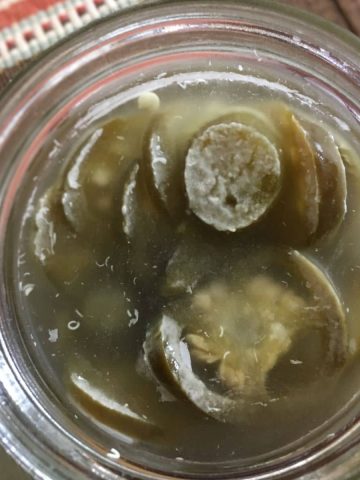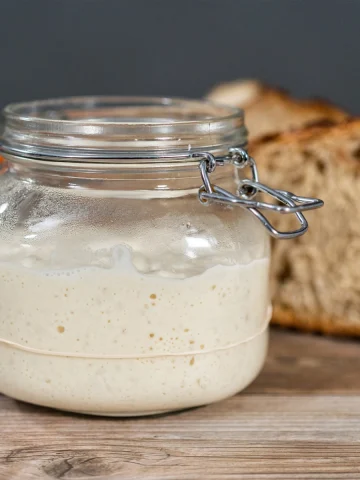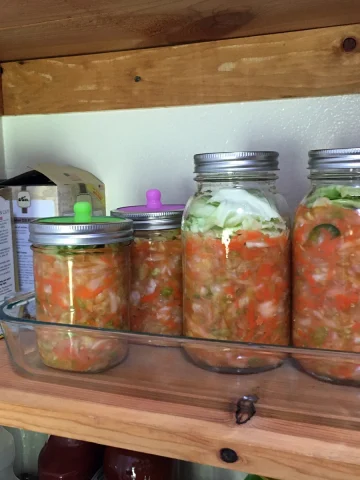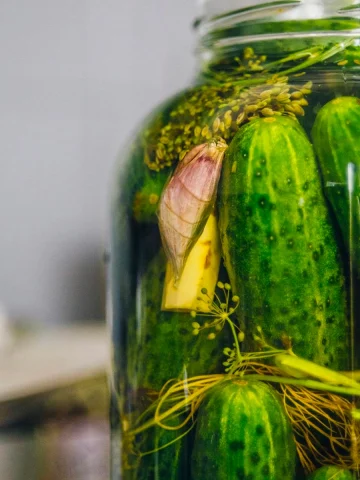How To Fix Sauerkraut That is Too Sour?
It happens. With all the best intentions in the world, you find a batch of sauerkraut has tasted sour, but how do you fix too sour sauerkraut?
Here are a few easy tips on how to fix too-sour sauerkraut!
Did you know that sauerkraut is chock full of vitamins, minerals, and probiotics? It's low in calories and high in vitamins C, B, K, calcium, and magnesium. It's also a great source of dietary fiber and iron. Eating it raw is full of wonderful probiotics and enzymes that are ever so good for your digestive tract. Many people even drink sauerkraut brine as a great way to keep their kidneys clean.
With all this goodness, it would be a shame to toss a batch of sauerkraut because it is too sour.
How Does Sauerkraut Get Its Sour Flavor?
Sauerkraut gets its sour flavor from lactic acid produced by the lactic acid bacteria (LAB) that eats the sugars in the cabbage and vegetables.
The sauerkraut will reach its maximum tang levels when the sugars have been completely converted to lactic acid.
How To Sweeten Sauerkraut?
Adding a little sweetness will balance out the acidity, sourness, and bitterness of sauerkraut. But sweetness can come from many sources besides plain white sugar; consider applesauce, diced apples, pears, or pureed dates as sweeteners that add flavor and mouth-feel.
Other ways to get a balanced sweetness might include adding sweet vegetable ingredients such as shredded carrots, corn, or daikon radishes.
Dried fruit is a common staple in most pantries and is sweet; try adding a few tablespoons of raisins, figs, or apricots to a batch of too-sour sauerkraut.
Add A Little Fat
Sauerkraut that has become too sour or acidic can be balanced out by adding creamy, fatty ingredients such as tahini, avocado, or a little olive oil, depending on the flavors you're working with. Mix ½ cup of the sauerkraut with avocado and enjoy!
Rinse & Drain Too Sour Sauerkraut
If you use the sauerkraut in a recipe such as brats, soup, casserole, pork, or salad, rinsing it first with cold water and draining it will help remove any sour and salty flavors.
Quick Sauerkraut & Onions Recipe To Reduce Sour Flavors
Start by sauteing onions, then add in the drained sauerkraut along with 1tbsp sugar, a pinch of sea salt, and black pepper. Let it cook for a few minutes on its own before adding it to your final recipe.
Try adding other traditional flavorings to offset the sour taste, such as peppercorns, bay leaves, juniper berries, caraway, and anise seeds.
A trick Germans would use to fix too sour sauerkraut is to cook it in a little butter with brown sugar and onions.
Another question I often see is, why did my sauerkraut turn brown on top? And how to prevent mushy sauerkraut? I answered that question in its post, which is worth a read.
Recommended Equipment for Fermenting at Home:
Baked Sauerkraut
Place the sauerkraut in a baking dish or casserole and add a small amount of water, sweet white wine, beer, chicken broth, or other liquid, depending on your personal taste. Bake the sauerkraut at 275 to 300 degrees Fahrenheit until it's softened and its flavor profile has mellowed and is no longer sour.

It is common for Fermented or Pickled Vegetables to Have Acidity to Them.
Instead of fixing it, try embracing the "mistake" and use it as a base in a delicious salad dressing. The brine from fermented vegetables adds salty and sour notes that will transform any dressing or marinade.
Homemade Sauerkraut: Tips On How To Prevent Sour Sauerkraut
Tips for preventing homemade sauerkraut from turning out too sour.
When you make sauerkraut at home, you will have far better control of its flavors and outcome. Here are a few tips on preventing homemade fermented sauerkraut recipes from becoming too sour.
First, start with a larger size cabbage. The bigger, fully mature cabbage tends to have a sweeter flavor. Look for cabbage that is over six pounds.
Next, shorten the amount of time that you ferment the cabbage. In general, a shorter fermentation time results in sauerkraut that is less bitter.
Fermenting sauerkraut yourself allows you the option of testing each batch to find the best fermentation time for your tastes.
Sample the cabbage about four to five days after you start the batch and every day or two after that. When it has the right flavor, stop the fermentation process by putting it in the refrigerator.
If it is still too sour, rinse the sauerkraut with cold water and squeeze the juices in a colander. It should be ready to eat.
Draining the liquid also will remove some of the acidity, resulting in milder, less sour sauerkraut.
If you are cooking with it, repeat the rinse and strain process before cooking it in your sauerkraut recipe.
Achieving the "right" fermentation time can be tricky when making sauerkraut at home, especially if you have several people with different flavor preferences.
Still, making homemade sauerkraut is quite rewarding in itself. It allows you to make many batches of sauerkraut that appeal to your tastes for a mild flavor as well as those who prefer a stronger taste.
If you are ready to make a batch of sauerkraut, please check out our Homemade Sauerkraut Recipe.
One Last Tip: Take Notes! Keeping a fermentation journal of fermentation time, temperature, and other fermenting data allows patterns to emerge; you will be able to figure out if a batch turned out the way it did.
When your sauerkraut is a little overly sour, salvaging it is not a problem. Reduce the acid content and neutralize the sour flavor with various well-chosen ingredients you probably have on hand. Combine these acid busters or add them individually to your sauerkraut or recipe to counteract the sourness and enhance the flavor.
Have an abundance of sauerkraut? Try any one of these 10 Delightful Ways To Eat Sauerkraut. You won't be disappointed.
What do you do if your sauerkraut is too salty? Check out another helpful article from Fermenters Kitchen: Salty Sauerkraut & How To Fix It, and troubleshoot why sauerkraut turns brown.
The information on this website is for educational purposes only. It has not been evaluated by the FDA and is not intended to diagnose, treat, prevent, or cure any disease. You assume full responsibility and liability for your actions.




